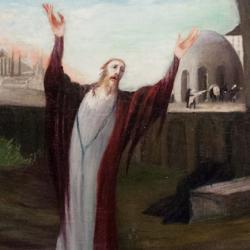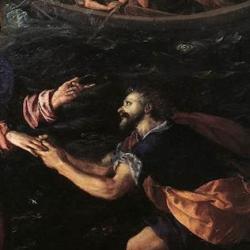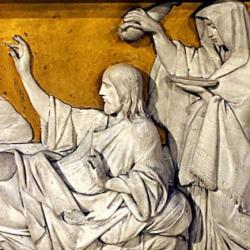Matthew doesn’t know where to put his “fulfillment formulae.” In chapter 2, he quotes Hosea when Jesus is leaving Israel; in chapter 21, he quotes Zechariah 9 before Jesus has climbed aboard the double-donkey mount. Jesus gives instructions to His disciples (vv. 2-3, then there’s a quotation from Zechariah (vv. 4-5), then the disciples do as Jesus tells them (v. 6-7a), and only then does Jesus mount up (v. 7b). You’d think the quotation would come after verse 7, but it doesn’t. What’s up?
It might be argued that Matthew’s quotation is simply anticipatory. Maybe, but that’s not the way things work in chapter 2; the placement of the quotation from Hosea highlights the Egypt-ness of Israel. It seems that, somehow, Jesus’ requisition of the donkey and foal – and not His riding on them – fulfills Zechariah most directly. How?
Perhaps we can explain this by noting that Genesis 49 forms part of the background to Zechariah and Matthew; the prophet and the evangelist triangulate with Jacob’s blessing on Judah, in which Jacob predicts that Judah, the one with the scepter, will tie a “foal” and a “donkey’s colt” to the vine. Jesus’ instructions to the two disciples refers to a tied donkey (though no vine), and that suggests that the finding and loosing of the donkey is itself a revelation of Jesus’ kingship. Even before He mounts, He is the king coming to daughter Zion.
Further, Jesus claims the donkey and foal as “Lord” (v. 3). He is the meek Lord who inherits the earth, the true Adam who rules over the beasts of the field (cf. Jesus’ reference to Psalm 8 in v. 16).
Finally, it may have something to do with the double-animals themselves. Do they represent Israel and the Gentiles? Two sides of a mobile throne? Mother and daughter? Whatever the symbolism, Jesus’ choice of animals says something about His royal status even before He sits, enthroned, on the garments.











